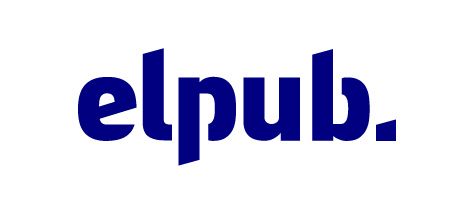УДК 069.1+069.5
DOI 10.28995/2073-0101-2019-1-235-246
Svetlana E. Yalovitsyna
Karelian Research Centre of the Russian Academy of Sciences, Petrozavodsk, Russian Federation
Valentina V. Volokhova
Petrozavodsk State University, Petrozavodsk, Russian Federation
Dmitry Zh. Korzun
Petrozavodsk State University, Petrozavodsk, Russian Federation
Semantic Approach to Presenting Information of Thematic Museum Collections
Abstract
The article sums up the experience of using the Semantic web technologies and ontological modeling in the presentation of thematic collections of a museum in a case-study of the Museum of history of Petrozavodsk State University (PetrSU) for digital services construction. The main reason for turning to these technologies was the need to improve the efficiency of information retrieval in the Museum database. The former relational database did not meet these goals, and another approach, a semantic one, was chosen. The experience allows to contend the advantages of using such technologies in a thematically limited array. The observational information in the collection allows to approach the issue of ontology and semantic relations at a new qualitative level. On the basis of the created knowledge base, mobile applications for the user (Museum visitor) and a ‘client for staff’ for information support and assistance services have been developed. The article discusses possible scenarios of working with these services, as well as the advantages of using a semantic network to create them. As an example it assesses a thematic collection of exhibits about the student construction brigades movement. Some of the described services have already been implemented, some are under development. The article argues that the proposed solution can significantly increase the information impact of Museum objects by providing semantic annotation of Museum objects, identifying links between Museum objects, allowing the visitor to follow their own trajectory in studying the exposition of the Museum, collecting new information, expert evaluation of the information provided by the visitor. The semantic approach is applicable not only to the Museum development, but also to solving other application task. Any information systems using the mechanisms of search for the formal coincidence of characters can be extended by methods of the semantic network analysis. Participation of users in updating the description of information objects with an expert evaluation option for received information make annotation work more effective. In particular, this applies to thematic collections, to which the specialists usually apply.
Keywords
Museum, thematic collection, museum information system, knowledge base, semantic network, ontology, information search optimization, mobile application.
Download the article: yalovitsyna_volokhova_korzun_doi
References
IVANOV, V. V. Ontologicheskii podkhod k sozdaniyu informatsionnoi sistemy po kul'turnomu naslediyu [Ontological approach to the creation of information system on cultural heritage. In Russ.]. IN: Uchenye zapiski Kazanskogo gosudarstvennogo universiteta. Seriya “Fiziko-matematicheskie nauki” [Proceedings of the Kazan State University. Series Physics and Mathematics], vol. 149, book 2, pp. 73—92.
ORE, O. Teoriya grafov [Theory of graphs. In Russ]. Moskva: Nauka. Gl. red. fiz.—mat. lit., 1980. 336 p.
VOLOKHOVA, V. V., YALOVITSYNA, S. E., KORZUN, D. ZH., VARFOLOMEEV, A. G. Vozmozhnosti ispolzovaniya semanticheskikh informatsionnyh servisov v muzeinom dele na primere muzeya istorii PetrGU [The possibility of using semantic information services in the museum work: A case-study of the PetrSU Museum of History. In Russ.]. IN: Znanie. Ponimanie. Umenie, 2017, no. 1, pp. 221-231.
KORZUN, D., VARFOLOMEYEV, A., YALOVITSYNA, S., VOLOKHOVA, V. Semantic infrastructure of a smart museum: toward making cultural heritage knowledge usable and creatable by visitors and professionals. IN: Personal and Ubiquitous Computing, 21(2), pp. 345—354 (Apr 2017).
SIGNORE, O. Ontology Driven Access to Museum Information. IN: CIDOC, 2005. May 24-27.
ZHOU, S., ZHOU, X., YU, Z., WANG, K., WANG, H., NI, H. A recommendation framework towards personalized services in intelligent museum. IN: Proceedings of the 2009 International Conference on Computational Science and Engineering, vol. 02, pp. 229-236. CSE '09, IEEE Computer Society, Washington, DC, USA, 2009.
ZVJEZDANA, ANTO? “Collecting” the present in ethnographic museums. IN: Ethnological Research — 18|19, p. 221.
Grant information
The study was carried out under state order.
The research is implemented within the Government Program of Flagship University Development for Petrozavodsk State University in 2017–2021.
About authors
Yalovitsyna Svetlana Erkkievna, PhD in History, associate professor, Institute of Linguistics, Literature and History of the Karelian Research Centre of the Russian Academy of Sciences, vice-director, Petrozavodsk, Russian Federation, +7-921-524-30-61, This e-mail address is being protected from spambots. You need JavaScript enabled to view it
Volokhova Valentina Vladimirovna, PhD in History, associate professor, Petrozavodsk State University, Institute of History, Political and Social Sciences, department of Russian history, assistant professor, Petrozavodsk, Russian Federation, +7-814-271-96-49, This e-mail address is being protected from spambots. You need JavaScript enabled to view it
Korzun Dmitry Zhorzhevich, PhD in Physics and Mathematics, associate professor, Petrozavodsk State University, Institute of Mathematics and Information Technology, department of computer science, assistant professor, Petrozavodsk, Russian Federation, +7-814-271-10-84, This e-mail address is being protected from spambots. You need JavaScript enabled to view it
Submitted 10.08.2018, published (for citation):
YALOVITSYNA, S. E., VOLOKHOVA, V. V., KORZUN, D. Zh. Semanticheskii podkhod k predstavleniyu informatsii muzeinykh tematicheskikh kollektsii [Semantic Approach to Presenting Information of Thematic Museum Collections. In Russ.]. IN: Vestnik arhivista / Herald of an Archivist, 2019, no. 1, pp. 235-246. doi 10.28995/2073-0101-2019-1-235-246














